When workers at a vending machine factory in Ukraine had their homes bombed, the owner Alex Stepura repurposed the facility to build them new ones. From that, Terra Monada was born, a company set up to produce good-quality, relatively affordable modular homes to replace the bomb damage. “The ambition was to create something that was strong, elegant, simple, and quick to assemble,” says UK-based partner Chris Baxter.
More like this:
– How pop stars react when war breaks out
– The most ingenious recycled homes
– 10 of the world’s most ingenious buildings
Now re-named HOMers, the company is growing fast. Stepura’s son Nikita Stepura, who is involved in the business, explains that the homes would also work well for the many Ukrainian refugees whose houses have been damaged and who now live elsewhere. “When there’s a peaceful resolution, their HOMers shelters could be dismantled and reassembled back in their home-town or village.” This design has potential beyond conflict situations, Baxter believes, and could be a solution for those made homeless by the recent earthquake in Turkey, or in any country suffering from a shortage of social housing.
The UN Refugee Agency UNHCR estimates that there are 103 million forcibly displaced people worldwide. The agency has a handbook on the subject of shelter and a catalogue of different shelter styles. In the handbook, it defines adequate shelter as “protection from the elements… a space in which [people] can live and store belongings, and… privacy, comfort and emotional security.”
HOMers is just one of the many designs out there with the potential to help people around the world in different housing crises. On World Refugee Day we look at some of the homes created around the world to house people fleeing war, disaster or hardship.

Empower Shacks by Urban ThinkTank have roof-top solar panels to light the public spaces at night (Credit: Ben Kollenberg)
1. Empower Shacks by Urban ThinkTank
With an estimated population of around 450,000, Khayelitsha near Cape Town is one of South Africa’s biggest informal settlements. Switzerland-based Urban ThinkTank has installed 74 of its Empower Shacks there, with a further 67 to follow. The idea of the two-storey modular units is that space on the ground floor can be used commercially, and hence generate income for the household. There are also rooftop solar panels, to light the public spaces at night.
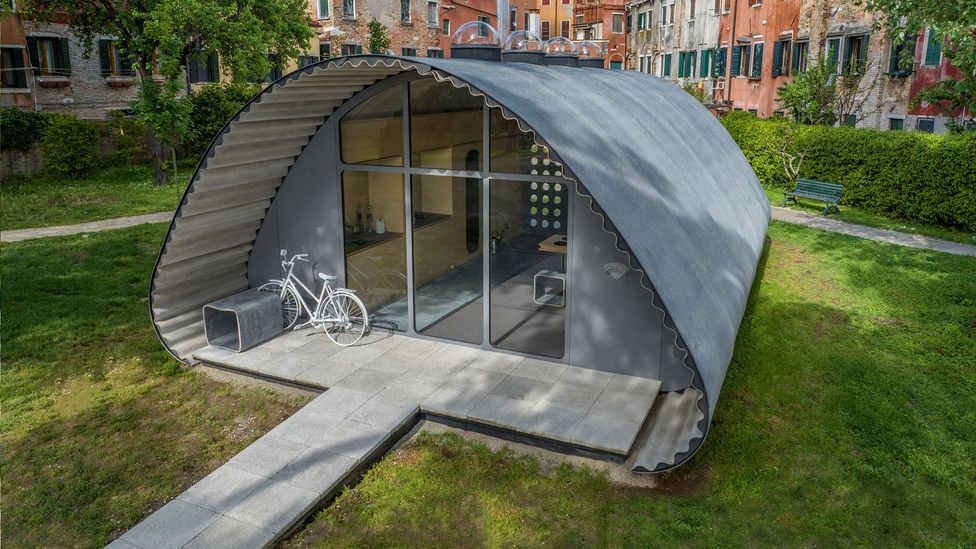
Materials company Holcim and the Norman Foster Foundation collaborated to create shelters made with rollable concrete (Credit: Chiara Becattini)
2. Essential Homes Research Project by the Norman Foster Foundation
The non-profit Norman Foster Foundation and building materials company Holcim have created this home for displaced people. The idea is to drape rollable concrete sheets over a temporary frame, and to spray them with water, making them rigid. This exterior shell would be lined with insulation, and filled out with a flat-packed interior comprising a kitchen, heating and furniture. Meanwhile, pathways of Holcim’s precast concrete tiles would run between these homes. The tiles are permeable, so rainwater would pass through them, avoiding floods and puddles. And luminescent aggregates in the tiles absorb light during the day and reflect it during the night, enhancing safety while reducing energy use.
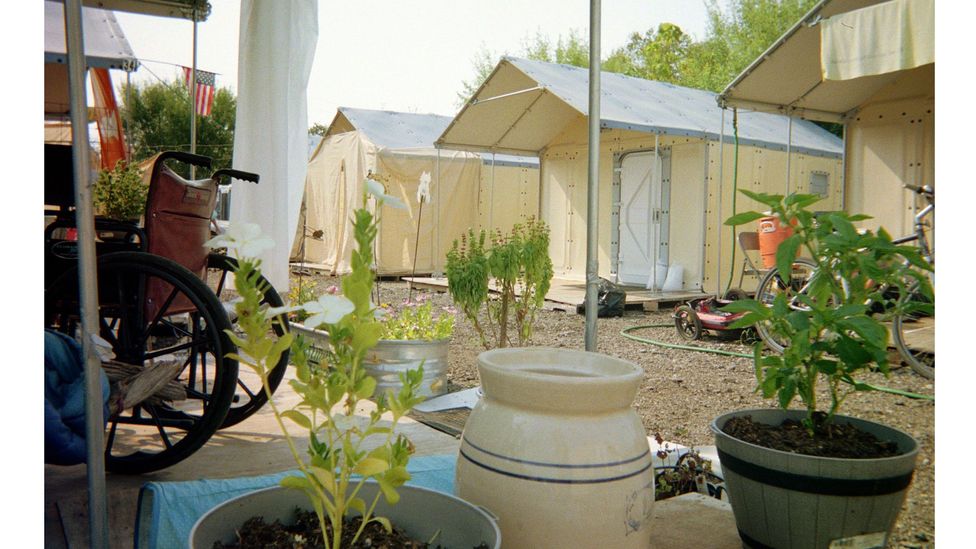
The Better Shelter emergency dwellings, funded by the Ikea Foundation, are shipped in flatpacks and can be assembled in hours (Credit: Ali Haj Suleiman)
3. Ikea Better Shelter in Turkey and Syria
Earlier this year, Swedish non-profit organisation Better Shelter delivered 5,000 emergency shelters to the earthquake-hit areas of Turkey and Syria. Funded by E10m from the Ikea Foundation, the shelters are shipped in flatpacks, and can be assembled without tools in hours. Each shelter is sturdy enough to protect against harsh weather, has a lockable door and a solar powered lamp. The shelters are used not only as temporary homes, but as classrooms and clinics in more than 80 countries including Ukraine, Bangladesh and Colombia.

HOMers’ standard 24 sq m modular dwelling is easily transportable – the homes have been put to good use in Ukraine (Credit: HOMers)
4. HOMers standard design
The 24 sq m home by HOMers’ (originally Terra Monada) – and nearly all its furniture – can fit on to one lorry. The panels that make up the home’s three modules can be put together with no special tools or skills in a few hours. So far, 50 have gone up in Ukraine, with 25 more currently under construction.
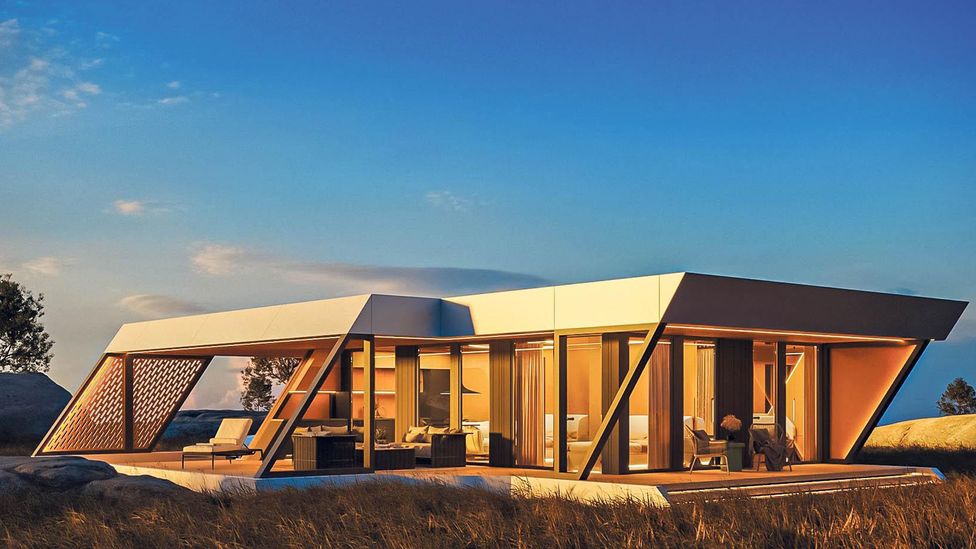
The diagonal design by Ukrainian company HOMers will include an updated system for the foundations (Credit: HOMers/ computer generated image)
5. HOMers diagonal design
The new diagonal design by Ukrainian company HOMers will have more covered terraces than its standard model, and an updated system for the foundations. Instead of needing to dig square holes, fill them with gravel and cover them with concrete, this version just needs geo screws – big screws which go into the ground, and can be screwed down by one person.
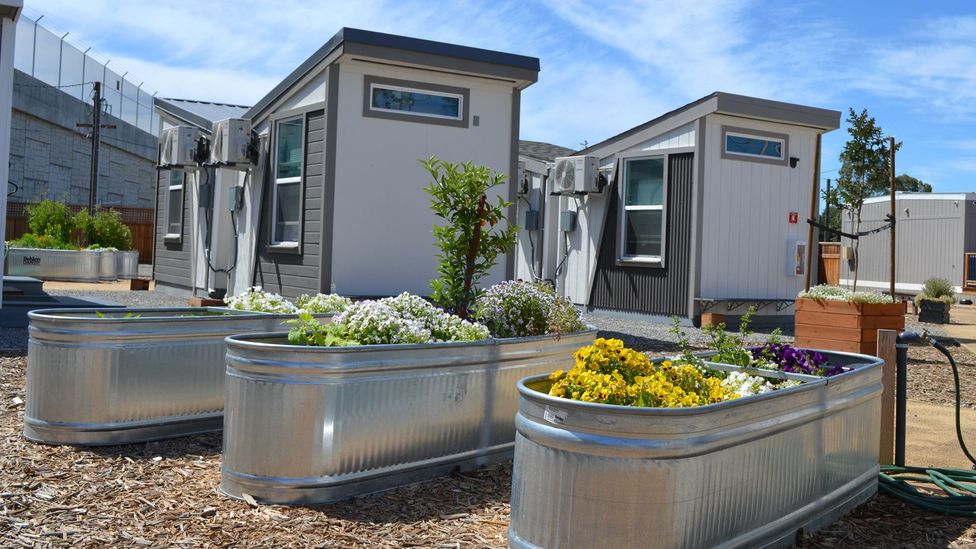
The Bridge Housing Community in San Jose, California consists of 40 dwellings and communal areas (Credit: Habitat for Humanity East Bay/ Silicone Valley)
6. Bridge Housing Community, San Jose, California
Around 6,000 people in the Silicon Valley city of San Jose are homeless. Bridge Housing Community comprises 40 dwellings built by thousands of volunteers through the non-profit organisation Habitat for Humanity. Each home has double glazing, heating and cooling equipment, smoke and carbon monoxide detectors, lighting, shelving, a bed, desk and locking door. The common space features community gathering areas, garden planters, a dog run, on-site security and parking, as well as a kitchen, laundry facility, washrooms, showers, and meeting and computing spaces.
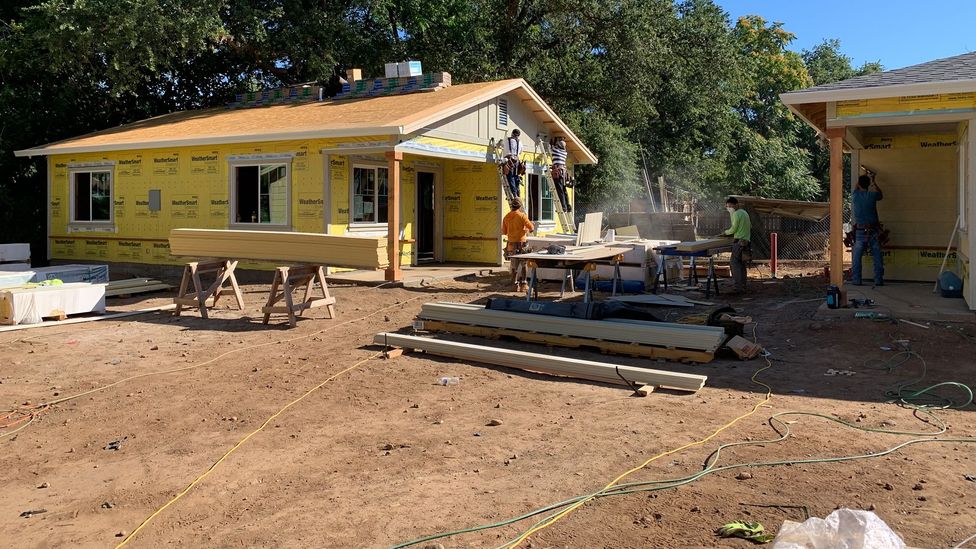
Six simple, single-storey, pitched-roofed homes have been built by Habitat for Humanity in Chico, California (Credit: Habitat for Humanity)
7. Chico, California
In 2018, Camp Fire, California’s deadliest ever wildfire destroyed 90 per cent of the town of Paradise, including 14,000 homes. Many of the 50,000 Paradise residents who were displaced by the fire were underinsured or uninsured, and were renters. And many were already living in very small spaces such as converted garages. These six new homes have been built by Habitat for Humanity in the city of Chico, about 15 miles from Paradise. Simple, single-storey and pitched-roofed, they range from 63 sq m one-bedroom to 108 sq m, three-bedroom homes. Once concrete foundations were in place, volunteers stepped in to get the rest of the homes built. And all the new homeowners were involved in the construction of their own dwelling.